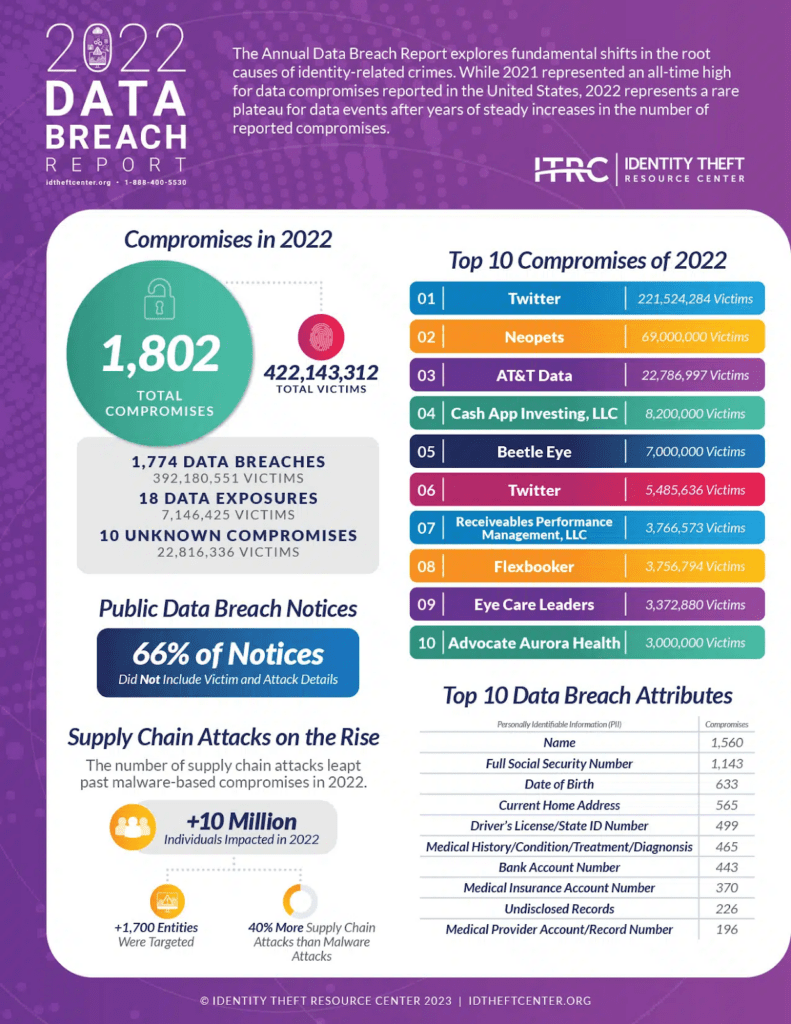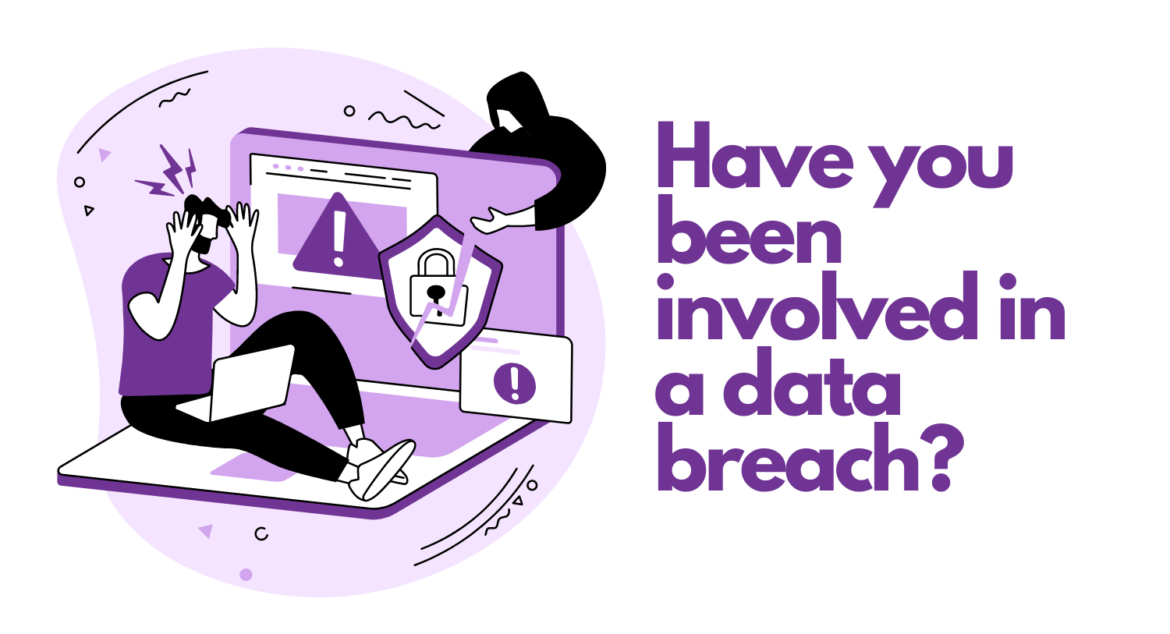Curious to discover the extent of your personal information that’s accessible online? Now’s the perfect opportunity to explore and find out. According to the Identity Theft Resource Center’s 2022 Annual Data Breach Report, the number of data compromises was the second highest number ever seen in a single year, second only to 2021. 2022 missed the highest record set in 2021 by just 60 events with 1,802 compromises. There were 422.1 million individuals impacted in 2022, which was an increase of over 40% from 2021.

Why You Should Pay Attention to Data Breaches
The types of information released most often in data breaches are email addresses, passwords, names, usernames, and phone numbers. Now pause for a moment and think about where those bits and pieces of information could lead to in your life.
When your personal information is compromised in a data breach, it puts your personal security at risk. Cybercriminals can use this information for identity theft, fraud, or other malicious activities. By checking to see if you have been involved in a data breach, you can take immediate action to protect your accounts and personal information.
How to See if You’ve Been Compromised
While many are familiar with notable data breaches at companies like Optus and Medibank, numerous incidents go unreported. That’s where Australian online security specialist Troy Hunt’s creation, Have I Been Pwned?, comes into play. The primary purpose of this free service is for individuals to be able to easily evaluate the risk of whether their accounts were involved in a data breach. It is used by many national governments, security services, and law enforcement.
A Shocking Visual
Story Lab and ABC Australia have created a visual tool with the help of Have I Been Pwned? for us to understand what industry experts call the “mosaic effect.” According to Centre for Humdata, the mosaic effect is when disparate pieces of data or information—although individually of limited utility—become significant when combined with other types of information. Basically, it just means that a stand alone breach may seem harmless, but when multiple breaches occur, you can piece all your vital information together.
When I tested the interactive tool with an old email address created in my twenties, it pieced together a mosaic puzzle sharing the year and place I was compromised. It found that I had been compromised 23 times. Ouch!

Overall, checking if you have been involved in a data breach is essential for protecting your personal security, preventing identity theft, safeguarding your accounts, maintaining privacy, and complying with relevant regulations. It enables you to stay proactive and take necessary steps to minimize the impact of a data breach on your personal information.

